Do you have a question about the La Crosse WT513ER and is the answer not in the manual?
Congratulations on purchasing this innovative Projection alarm clock which displays indoor temperature and humidity and also outdoor temperature.
Visual representation of the clock's components and controls.
Highlights of the projection alarm clock's capabilities, including time projection and weather forecasting.
Step-by-step guide for installing or replacing batteries in the main projection alarm clock unit.
Explanation of how the clock is powered by batteries and the AC/DC adapter.
Instructions for installing or replacing batteries in the outdoor temperature transmitter.
Steps to pair the projection clock with the outdoor transmitter for temperature reception.
How to reset the unit to factory default settings or in case of malfunction.
How the time is projected and its visibility.
Cycling through different information on the LCD screen using the MODE/MIN key.
Identification and location of the clock's operational buttons.
Adjusting LCD contrast, time zone, time, and date for accurate operation.
Configuring 12/24 hour format and selecting between Celsius or Fahrenheit units.
Setting for DST, noting it's not available in all regions.
How to set and activate the alarm time using the AL/HOUR and MODE/MIN keys.
Procedures to disable the alarm, either temporarily via snooze or permanently.
Understanding the "weather boy" icons for forecasting weather conditions.
Interpreting the arrow for air pressure trends.
How the EL backlight functions for night-viewing and alarm events.
Troubleshooting poor signal reception from the outdoor transmitter.
Guidelines for mounting the outdoor sensor unit on a wall or surface.
Instructions for cleaning, handling, and preserving the units.
Detailed technical ranges, power requirements, and dimensions.
Manufacturer's responsibilities, product usage limits, and warranty information.
| Display Type | LCD |
|---|---|
| Time Format | 12/24 Hour |
| Alarm Features | Dual Alarm |
| Alarm Type | Buzzer |
| Temperature Display | Yes |
| Outdoor Temperature Range | -40°F to 140°F (-40°C to 60°C) |
| Humidity Display | Yes |
| Sensor Included | Yes |
| Type | Alarm Clock |
| Power Source | AC Adapter |
| Battery Type | AAA |
| Temperature Units | Fahrenheit, Celsius |
| Indoor Temperature Range | 32°F to 122°F |
| Indoor Humidity Range | 20% to 90% |
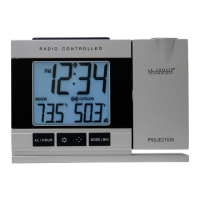
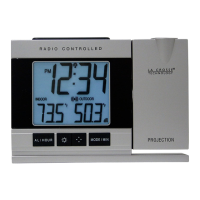
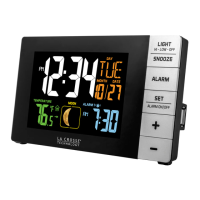
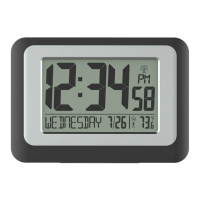
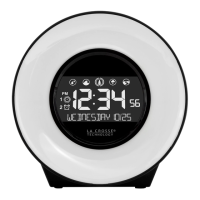
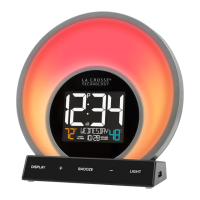
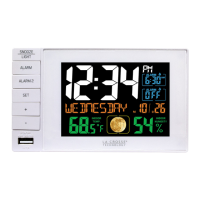
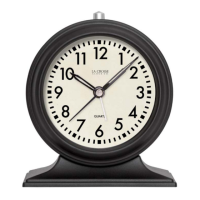
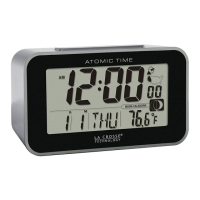
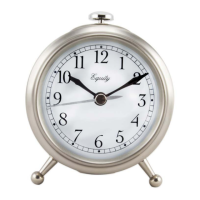
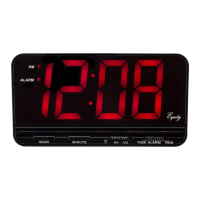
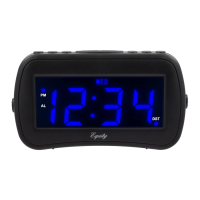
